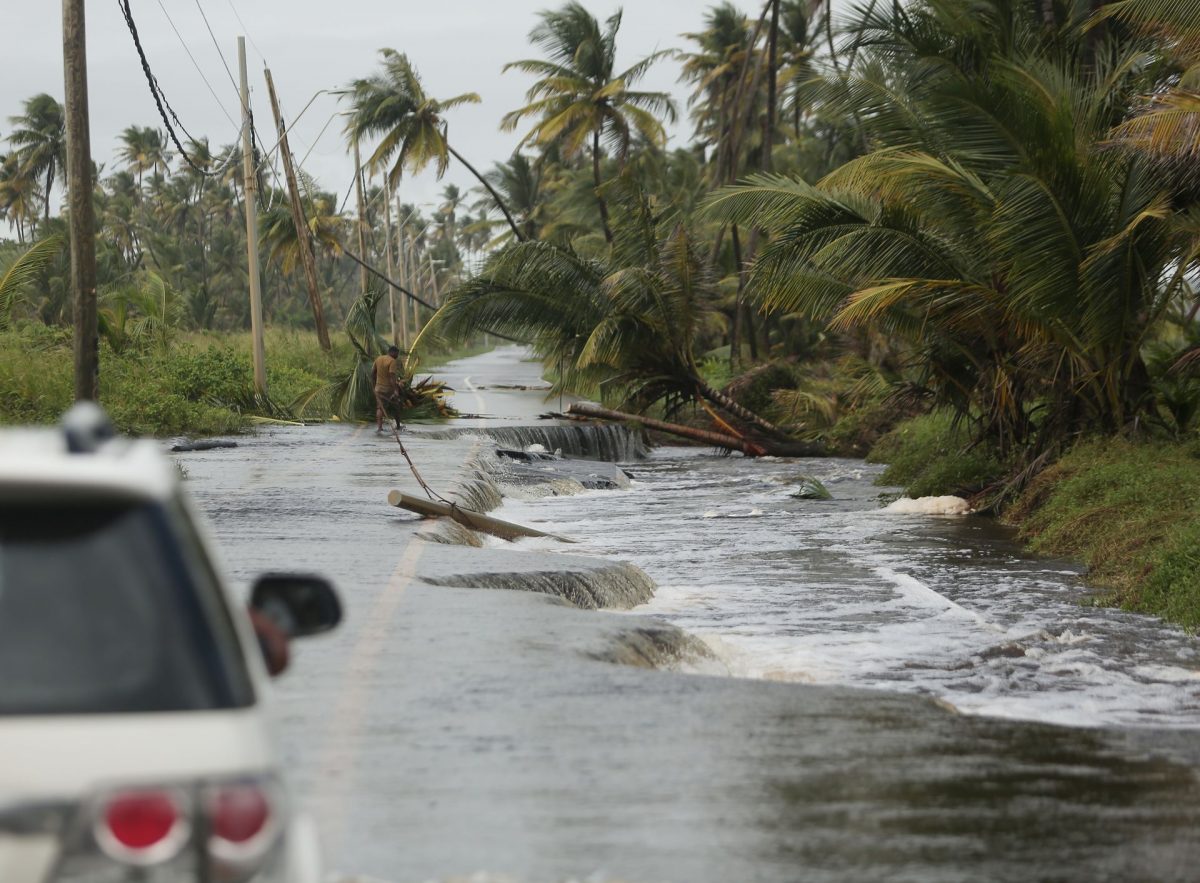(Trinidad Guardian) The Ministry of Works and Transport is hoping that within two weeks, once the weather allows it, they will begin construction of bypasses that will reconnect the Manzanilla to Mayaro roadway.
Two weeks ago the road was closed off after heavy rainfall and floodwaters caused severe damage to the infrastructure.
A light pole collapsed into one of the holes caused by the flooding, coconut trees fell over electricity lines, and large portions of the road were cracked open.
Thousands of people who use the road, including members of the Mayaro community and those who work in the oil industry, were affected as they were forced to take alternative routes to get to Mayaro or parts of Manzanilla and Sangre Grande.
The road was closed pending a structural assessment by engineers of the Ministry of Works and Transport.
Programme Director of the Programme for Upgrading Roads Efficiency Unit (PURE) Hayden Phillip told the Sunday Guardian yesterday that there are 16 breaches on the Manzanilla to Mayaro Road and that the ministry intends to build bypasses to allow the resumption of vehicular traffic on the road.
These bypasses, which will be built on the side of the road closer to the swamp, will be temporary until the ministry does permanent repairs.
“We had flooding over ten kilometres of this road and the entire road is 26 kilometres. Over that ten kilometres, we have had 16 breaches. What we are doing is preparing designs and contract documents.
“Firstly, we want to provide connectivity to the people. Where there are breaches, we will build by-passes along the main road. In this way, people will be connected to Sangre Grande and Mayaro.
By the end of this week, he said, “all designs will be completed and we are hoping that by the following week, we should be on the ground starting work. If we finish designs by the end of next week, maybe by the end of the following week we could have boots on the ground trying to restore connectivity.”
He was speaking yesterday during a tour of the area by Ministry of Works officials.
When asked about the cost of the project, he declined to give a figure saying that they are still in the early stages.
The cost to repair the last collapse on the Manzanilla to Mayaro Road was $30 to $40 million.
Works and Transport Minister Rohan Sinanan, who was also present, said that the whole idea of temporary bypasses was to create connectivity as soon as possible.
“You clear the land, you put some mill material and so on. This allows the return to some level of normalcy while you work on the permanent fix. That permanent fix will take some more time.”
He said that some of the breaches are small and repairs could be done on them without the need for a bypass.
Sinanan also spoke about the importance of that roadway being reopened to the public.
“The oil sector in Mayaro is very important. To get to Mayaro, people can use Sangre Grande or go through San Fernando. We have to make sure that the connectivity to Mayaro is never cut off. We have teams working there to ensure that the roads are in good condition. This Manzanilla to Mayaro Road is getting urgent attention.”
Director of Drainage at the ministry, Katherine Badloo Doerga explained that the roadway was flooded which led to parts of the road breaking off.
“This was a result of the washing of the sand in areas that were not properly engineered. It continued to break and we continued to lose roadway. Now we have the PURE Unit trying to give assistance to restore the roadway, however, it will take time.
“We don’t want a repeat that after we fix the road it starts breaking again.”





